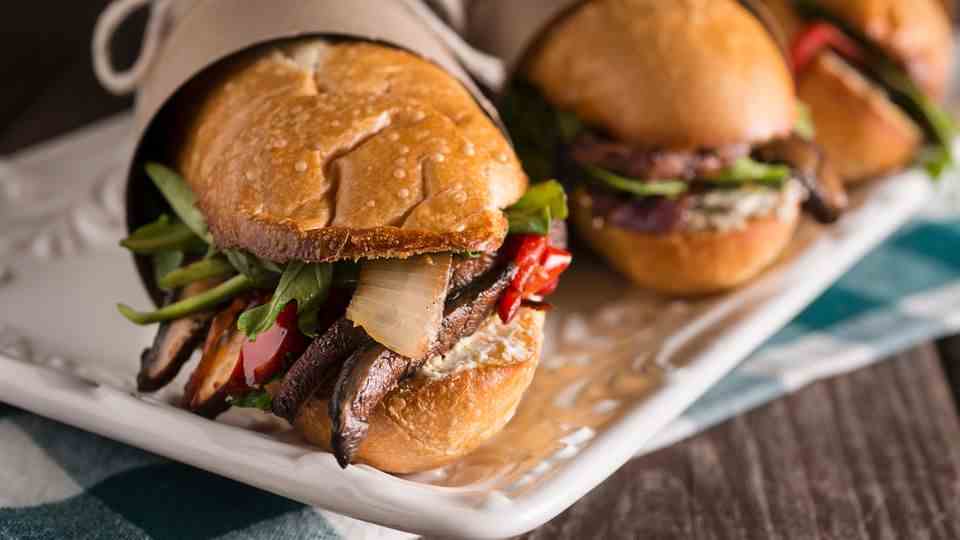gastronomy
With or without calorie information? From the tug of war over the menu
Does calorie information in restaurants also make sense in Germany? A corresponding proposal is to be examined.
© Mark Lennihan / Picture Alliance
Anyone who has gained a few kilos often pays more attention to the calorie information when eating. Many chains in England now have to print this information on their menus so that people can remain in control in the restaurant. Would that also make sense for us in the fight against obesity?
Anyone who goes to a restaurant wants to be pampered – or simply want to get full quickly. But do guests want to think about the calorie content when choosing fish, meat or pasta? Would you like to study energy values on the menu and decide against calorie bombs? In England, the government believes that calorie information on the card will help in the fight against rampant obesity. Since April, larger chains have had to show these numbers in the menu there. In Germany there is no such obligation. But Berlin is checking whether it makes sense. The opponents of the calorie lists in the restaurant protest in advance.
Do not reduce nutrition to calorie information
Pure calorie counting has been “dismissed as humbug for decades” by scientists as a method of promoting healthy eating, warns Sarah Wiener (59), who has become known as a cook. “I have the feeling that with such proposals people are still acting as if people were petrol engines: fuel in, energy out. But nutrition is much more complex,” says the entrepreneur and Austrian Greens MEP in the European Parliament.
In other words: Who and for what purpose does it help when making a selection on the menu to read that some salads outweigh some pasta dishes in terms of calories?
“The Federal Ministry of Food and Agriculture (BMEL) is currently examining whether a mandatory declaration of calories in out-of-home catering is possible and sensible,” explains a spokeswoman for the ministry with regard to the British model. To do this, the legal feasibility would have to be examined as well as the practical aspects for consumers and companies. “Therefore, an evaluation cannot be made at this point in time.”
Calorie information in the supermarket has long been the norm
Unlike in restaurants, the obligations for retailers have already been introduced in Germany: prepackaged food is labeled in stores with calorie information. Whether chips, quark or jam, the nutritional information is usually printed in small print on the goods. This obligation is part of the European Union (EU) Food Information Regulation.

Calorie labels on groceries in supermarkets have long been the norm
© Benjamin Nolte / Picture Alliance
This should give consumers the opportunity to make conscious choices. This in turn should help to reduce overweight, obesity (obesity) and other diseases such as diabetes in society. This argument also played a role in the new menu rule in England.
In Germany, experts classify around two thirds of men and half of women as overweight. At the same time, calorie information in restaurants has so far been voluntary – and rare. For example, some chains mention them on their websites. Consumers can use it to find out before they visit: a “Big Mac” from McDonald’s has around 500 kilocalories, as you can read there. In a block house restaurant, a “Mr. Rumpsteak” without side dishes comes to about 350 kilocalories. To put it simply, adults need around 2000 kilocalories a day as a rule.
Dehoga criticizes the proposal
“We have been making the allergens and nutritional values of the Block House dishes available to our guests for a good ten years,” reports Markus Gutendorff, CEO of Block House Restaurantbetriebe AG, about the Internet information. “In fact, we rarely have inquiries about the energy and nutritional values of our dishes at the Block House restaurants.” A spokeswoman explains that the websites of the steakhouse chain from Hamburg are well used.
Voluntary network information is one thing – from the point of view of the German Hotel and Restaurant Association (Dehoga), a legal obligation to show energy values on cards would be the wrong way. “The Dehoga is clearly against the mandatory indication of calories on menus in local restaurants,” explains Ingrid Hartges, general manager of the federal association. “The new law is controversial in Britain – and not without reason.”
Enormous effort for restaurants
For them, the concept is not a suitable tool in the fight against obesity. “Just counting calories is not a substitute for a balanced, healthy diet and exercise,” Hartges explains. She refers to experiences in retail: “It is well known that customers in the supermarket reach for foods that have particularly high calories, despite the information.” The association also cites the additional work for restaurants: “Our industry is about enjoyment. Just imagine the bureaucratic effort for the companies with offers that sometimes change daily, which calculate the calories for the individual ingredients in the respective quantity for each dish would have to calculate.”

In the UK, large chains have been required to list calories on menus since April
© Benedikt von Imhoff / Picture Alliance
Antje Gahl, spokeswoman for the German Society for Nutrition in Bonn, argues in a similar way: “In our view, calorie information on menus is not the focus when it comes to healthy eating.” Counting the energy values can be important if severely overweight people have to specifically reduce calories as part of a therapy. But in everyday life, even when going to a restaurant, what counts is a much broader understanding of eating something healthy: it’s about enjoyment, taste, quality, freshness, variety, balance, enjoying eating in a pleasant atmosphere.
In selected areas, cooking with the calorie table can be implemented – but not everywhere. “Because to do this, you would always have to cook according to exact recipes.” In smaller restaurants and in upscale gastronomy, the creativity of the chef could suffer, says the nutritionist. “Then he can’t refine his recipes based on his feelings, for example with cream or a dash of alcohol, because then the calorie content changes.”



